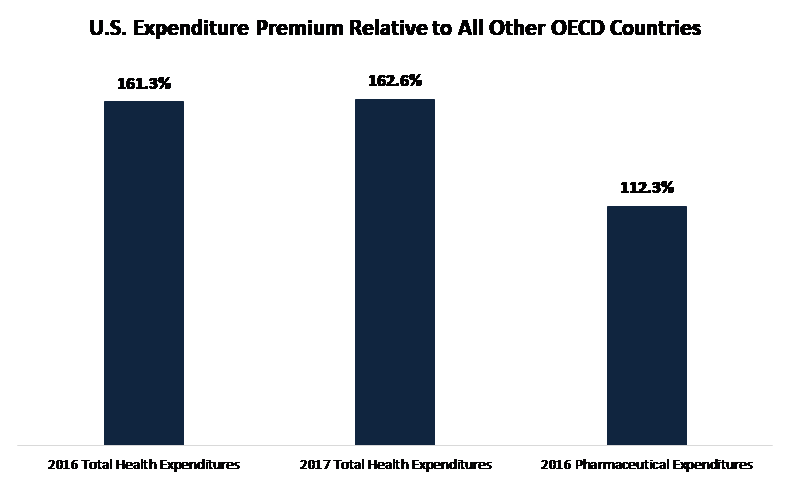At 2 pm Eastern time today, President Trump spoke at the Department of Health and Human Services where he recommended a litany of policies that would ultimately impose price controls on the pharmaceutical market.
Take his proposal to force the prices paid by Medicare for drugs administer in doctors’ offices and outpatient hospitals to be closer to an “international pricing index” over the next five years. Since the index benchmarks against countries that impose drug price controls, this mandate simply imposes European-style price controls here in the U.S. This would be very troubling.
First, these price controls would have been implemented by executive decree, not appropriately through Congressional debate and approval. If the U.S. were to impose price controls, and we shouldn’t, then it should be done properly via open debate in the U.S. Congress.
Second, price controls never work. Whether it is rents in New York City or biologic medicines used in hospitals, price controls make things worse. For pharmaceuticals, as noted in a National Bureau of Economic Research Digest report, price controls make things worse by devastating the research and development expenditures that are the lifeblood for new cures.
In fact, this is precisely what has happened in Europe. When criticizing Hillary Clinton’s prescription drug pricing plan, Dr. Joel Zinberg noted that “in the mid-80s, European drug R&D was 24% higher than in the U.S. After price controls, European pharmaceutical R&D grew at half the U.S. rate and today substantially trails American R&D.”
Ultimately less research harms patients. There have been impressive pharmaceutical innovations as of late, that have reduced cardiovascular mortality in the U.S., cured cancers (such as childhood leukemia), and cured Hepatitis C. But, more cures are still desperately needed. These cures will not be created should the U.S. impose price controls.
Lastly, should the Administration adopt price controls and decimate the R&D to fund tomorrow’s cures, the underlying problems afflicting the U.S. health care system will still remain. The chart below, which is based on data maintained by the OECD (a group of industrialized countries), shows that 2016 per capita pharmaceutical expenditures (the latest data available) in the U.S. were, on average, 112 percent higher than the average per capita expenditures in the rest of the OECD. But, then again, total U.S. health care expenditures per capita in 2016 and 2017 were even more expensive – a bit more than 160 percent higher.
 In other words, the U.S. has a systemic health care affordability problem. Targeting one part of the health care system (pharmaceuticals) will not solve the systemic problem. It will be like squeezing one end of a balloon – the problem will simply shift elsewhere.
In other words, the U.S. has a systemic health care affordability problem. Targeting one part of the health care system (pharmaceuticals) will not solve the systemic problem. It will be like squeezing one end of a balloon – the problem will simply shift elsewhere.
Instead of proposing price controls, the Administration should embrace reforms that empower patients and create actual health insurance that effectively mitigates the financial risks of becoming sick.
Dr. Wayne Winegarden is a senior fellow in business and economics at the Pacific Research Institute.
